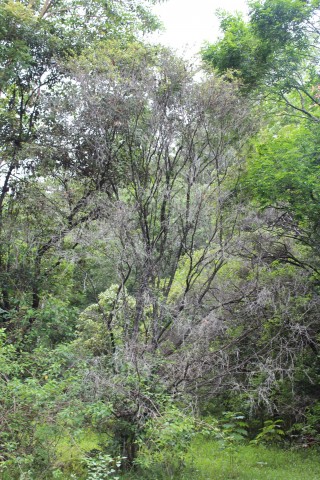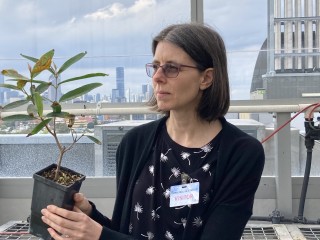Trans-Tasman collaboration key for tackling myrtle rust: NZ sits on new Australian working group

Critically endangered Australian native Rhodamnia rubescens showing the consequences of myrtle rust. Image: Geoff Pegg
The federal government in Australia has recently formed a new working group to help with efforts to combat the plant disease myrtle rust. The group’s work is urgent - the causal agent of the disease, Austropuccinia psidii, has been present in Australia since 2010 and as inoculum levels build up in the environment, its effects are causing increasing alarm. Australian researchers predict 16 rainforest plants could be driven extinct within a generation.
Renee Johansen, project management/communications leader for the research programme Beyond Myrtle Rust (BMR) at Manaaki Whenua, will represent New Zealand on the group.
Group members will initially focus on supporting the Australian government to develop a threat abatement plan that can be used to leverage funding opportunities. The group also facilitates information sharing and aims to accelerate communications activities in Australia.
Renee recently travelled to Brisbane for the inaugural meeting and gave a presentation on New Zealand’s response to myrtle rust. She spoke about New Zealand’s central and local government responses, and community-level activities as well as research projects.
Renee found attendees were particularly keen to discuss New Zealand’s communications activities. “It was interesting to hear that the monthly myrtle rust webinar series that I host from Manaaki Whenua has been of real value to Australian as well as New Zealand myrtle rust researchers” says Renee.
“I’m told the New Zealand myrtle rust stories in the Ngā Rākau Taketake monthly publication are also valuable. There is an appetite to help keep these initiatives going, and I plan to host more Australian researchers on the webinar series soon.”

Renee inspects an infected Syzygium jambos seedling
During the trip, Renee also visited researchers at the Queensland Department of Agriculture and Fisheries who are part of BMR and viewed experiments underway in their greenhouses. “The trip brought home the value of collaborations between New Zealand and Australian researchers, some of which predate BMR but have enjoyed ongoing support through the programme,” says Renee.
“Collaboration has been fundamental to many projects, both within and aligned with BMR”.
For example, screening for susceptibility to myrtle rust in New Zealand species has been extensively carried out in Australia, preparation of field samples, and greenhouse experiments, in projects designed to understand sexual reproduction in the pathogen have been co-ordinated across both countries, researchers on both sides of the Tasman contributed to work sequencing the genome of A. psidii, and Australian researchers are now using artificial leaf surfaces developed in New Zealand to study A. psidii without a host plant.
Renee hopes her ongoing involvement in the group will strengthen collaborations and help keep information flowing as both countries look for ways to protect their precious native and taonga plants.
